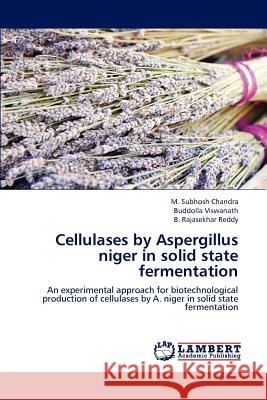Cellulases by Aspergillus niger in solid state fermentation » książka
Cellulases by Aspergillus niger in solid state fermentation
ISBN-13: 9783659161537 / Angielski / Miękka / 2012 / 220 str.
Biotechnological conversion of cellulosic biomass is potentially sustainable approach to develop novel bioprocesses and products. Microbial cellulases have become the focal biocatalysts due to their complex nature and wide spread industrial applications. In addition, cellulase production is the most important step in the economical production of ethanol, SCP and other chemicals from renewable cellulosic materials. To date, the production of cellulase has been widely studied in submerged culture processes, but the relatively high cost of enzyme production has hindered the industrial application of cellulose bioconversion. It has been reported that solid state fermentation is an attractive process to produce cellulase economically due to its lower capital investment and lower operating expenses. In this book, authors experimentally analyzed and illustrated the suitability of locally available cheap agro-residues as solid supports for the growth of A. niger in solid state fermentation for production of cellulolytic enzymes. In addition, a variety of leachate methods for maximum recovery of enzyme from the solid-state fermentation of bran were explained in this book.
Biotechnological conversion of cellulosic biomass is potentially sustainable approach to develop novel bioprocesses and products. Microbial cellulases have become the focal biocatalysts due to their complex nature and wide spread industrial applications. In addition, cellulase production is the most important step in the economical production of ethanol, SCP and other chemicals from renewable cellulosic materials. To date, the production of cellulase has been widely studied in submerged culture processes, but the relatively high cost of enzyme production has hindered the industrial application of cellulose bioconversion. It has been reported that solid state fermentation is an attractive process to produce cellulase economically due to its lower capital investment and lower operating expenses. In this book, authors experimentally analyzed and illustrated the suitability of locally available cheap agro-residues as solid supports for the growth of A. niger in solid state fermentation for production of cellulolytic enzymes. In addition, a variety of leachate methods for maximum recovery of enzyme from the solid-state fermentation of bran were explained in this book.











